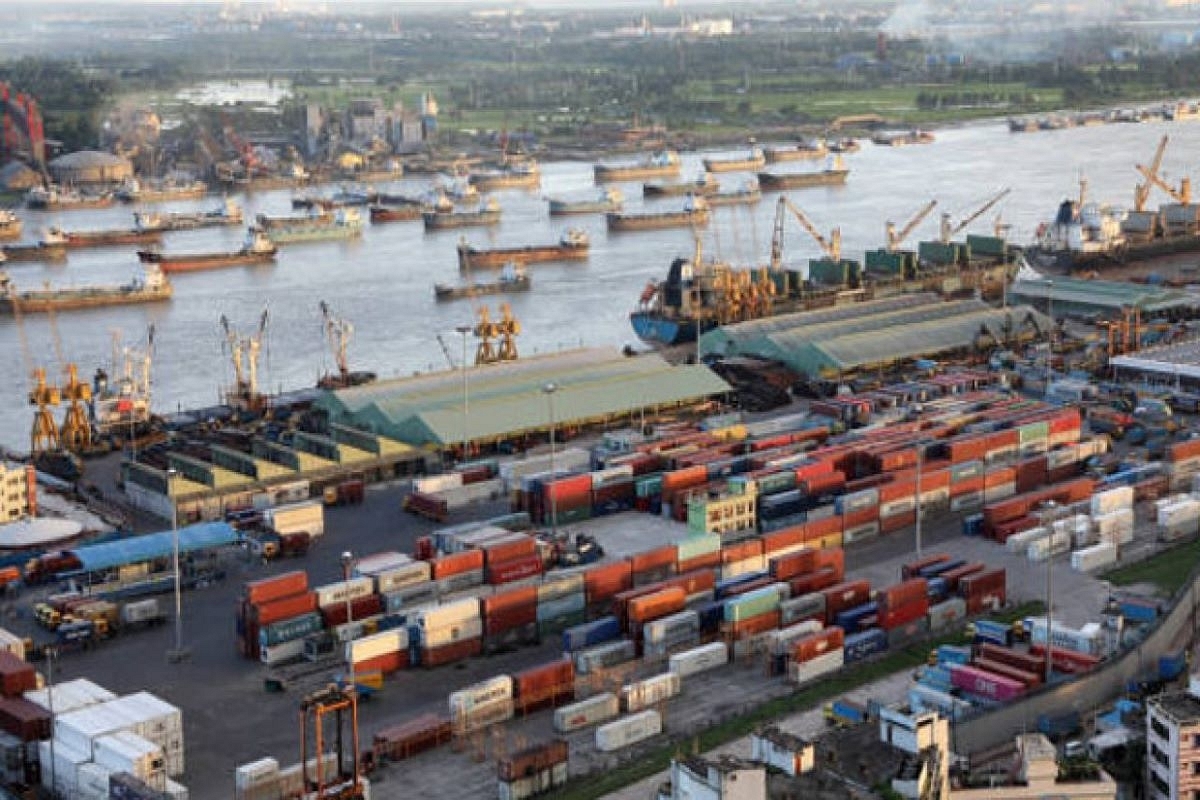Infrastructure
India's Infrastructure Diplomacy: Bangladesh Emerges As Top Partner For Development Projects In South Asia Region
- Bangladesh has emerged as India's major partner among neighbouring countries, significantly expanding the engagement in infrastructure development in terms of both financing and the types of projects.

From a standpoint of connectivity and strategy, Bangladesh holds significant importance. (Image via ORF)
India's line of credit to neighbouring countries represents a crucial facet of its foreign policy, reflecting the nation's commitment to fostering regional development and cooperation.
By extending financial assistance, India not only strengthens its diplomatic ties with its neighbours, but also endeavours to create a more stable and prosperous South Asian region.
According to N Ramesh, deputy managing director, EXIM Bank of India, Bangladesh has emerged as India's major partner among neighbouring countries, significantly expanding their engagement in infrastructure development in terms of both financing and the types of projects involved.
“Bangladesh, amongst South Asian countries, has the highest level of exposure. Around $7.9 billion (LOCs) is what we have today,” said Ramesh, as per an ET report.
EXIM Bank, established by the Indian government in 1981, is a key lending institution for India's infrastructure diplomacy.
It provides Lines of Credit (LOCs) on deferred terms to support developmental and infrastructure projects, equipment, and services from India, both within the South Asia region and worldwide.
Infrastructure Partnership With Bangladesh
In recent years, the focus has been on power generation and power transmission lines as well as development of a nuclear power plant where Russian entities are also engaged, said Ramesh.
“The biggest project that we have supported is in Bangladesh, that is the power plant, a joint venture of the Bangladeshi power generating company and NTPC. We are looking at adding huge capacity or generating capacity in Bangladesh and the financing is done by India.”
From a standpoint of connectivity and strategy, the eastern neighbour holds significant importance.
India has played a crucial role in supporting the improvement of railway and port infrastructure in this region.
The presence of ports in this country allows for quicker access to India's Northeastern states, and the EXIM Bank has prioritised financing the growth of vital ports and integration with railway systems.
“There are very critical railway lines there, critical in terms of Bangladesh’s high density and higher requirement for hinterland transport from port to the cities.” said Ramesh.
These projects are largely covering Dhaka with the port cities. But they are also very important strategically in the sense that they are connecting either to Agartala or to the rest of the Indian mainland, so that the connectivity is established and is seamless, he added.
Further, the upgradation of Mongla Port, the second largest port in Bangladesh, will be undertaken by Indian entities.
The financing for this project will come from the LOC extended by EXIM Bank.
Infrastructure Financing For Other Neighbouring Nations
As per the report, the Indian government continues to prioritise infrastructure development in the Maldives, due to the island nation's strategic location in the Indian Ocean Region and its position across important shipping routes.
Ramesh emphasised that the ongoing infrastructure projects led by Indian companies, particularly those supported by the EXIM Bank's LOC, are making solid progress.
Despite the volatile political situation in the island nation, India maintains a steadfast commitment to its investments, currently amounting to approximately $1.4 billion in terms of LOC allocations.
These funds are dedicated to various projects, including airport development, port infrastructure, and connectivity initiatives, among others.
In Nepal, the extended LOCs amount to $1.6 billion, with a strong emphasis on road development and transmission lines.
“In Nepal, a huge amount of road improvement work is being supported by EXIM Bank that is through the government of India's LOCs for bigger stretches of road network. A good 500 plus kilometre road network is being readied in Nepal,” said Ramesh.
For Sri Lanka, currently, EXIM Bank is taking a wait-and-watch approach regarding its exposure of about $2.7 billion LOCs.
The southern neighbour has undergone severe economic downturn in recent years due to dwindling foreign exchange reserves.
Ongoing projects in Sri Lanka include transportation networks, railways, roadways, as well as water treatment and distribution projects.
Support Swarajya's 50 Ground Reports Project & Sponsor A Story
Every general election Swarajya does a 50 ground reports project.
Aimed only at serious readers and those who appreciate the nuances of political undercurrents, the project provides a sense of India's electoral landscape. As you know, these reports are produced after considerable investment of travel, time and effort on the ground.
This time too we've kicked off the project in style and have covered over 30 constituencies already. If you're someone who appreciates such work and have enjoyed our coverage please consider sponsoring a ground report for just Rs 2999 to Rs 19,999 - it goes a long way in helping us produce more quality reportage.
You can also back this project by becoming a subscriber for as little as Rs 999 - so do click on this links and choose a plan that suits you and back us.
Click below to contribute.
Latest